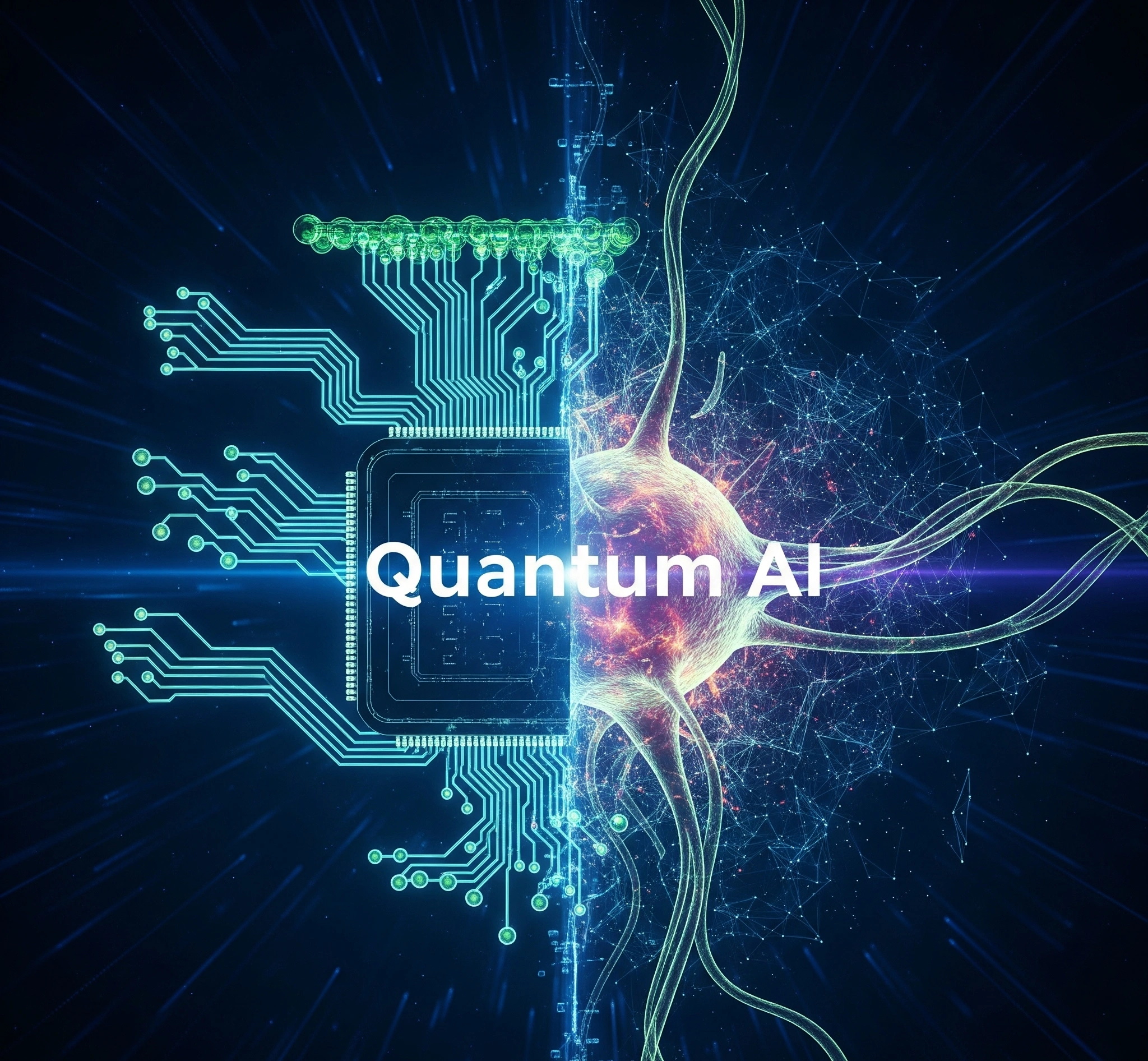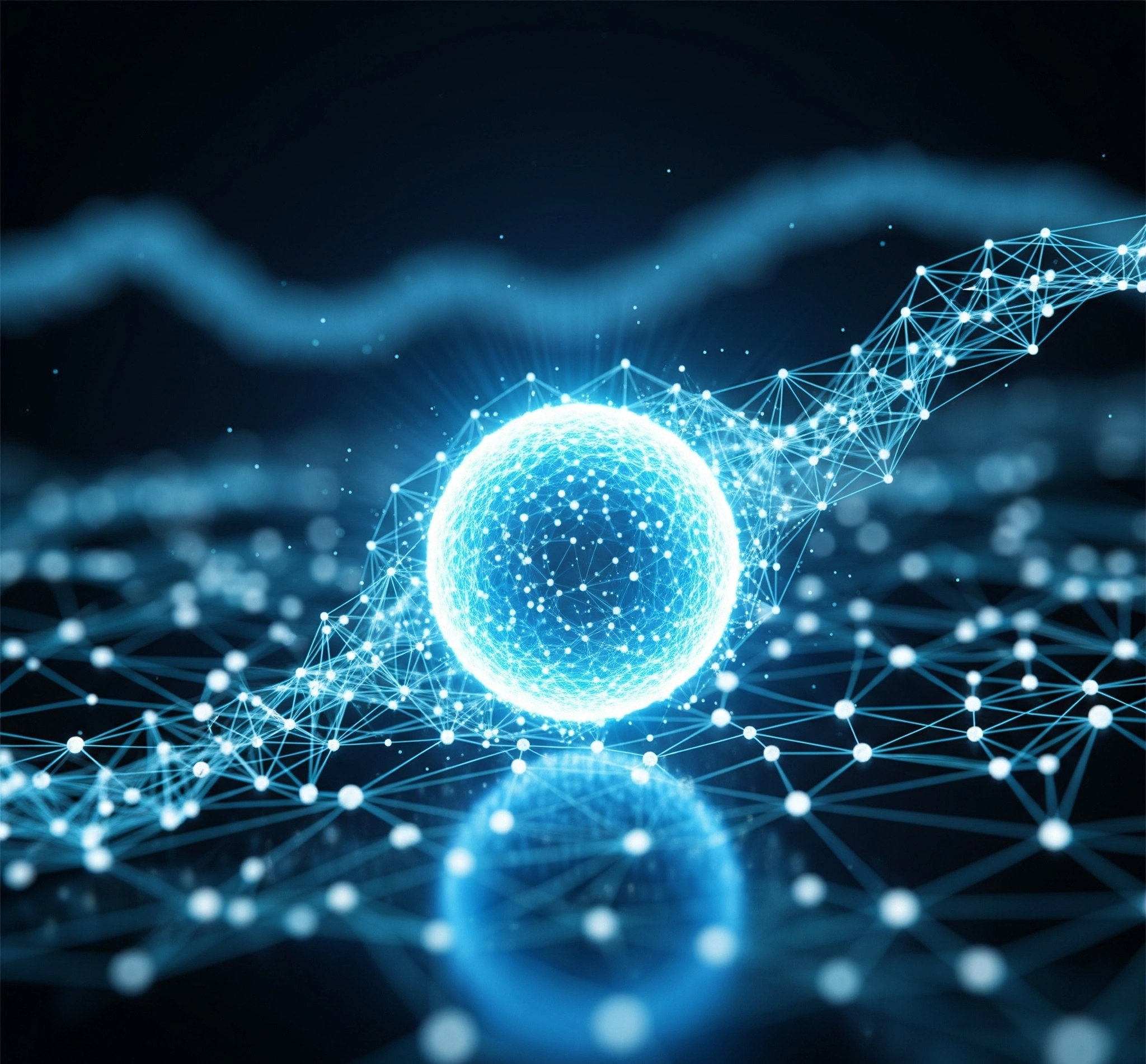THE DIGITAL ECHO

For years, Artificial Intelligence has pushed the boundaries of what machines can do. From recognizing faces to driving cars, AI has transformed industries and daily life. Yet, as we tackle increasingly complex problems—like discovering new drugs, optimizing vast logistical networks, or truly understanding human language—we sometimes hit a wall. Classical computing, despite its incredible power, faces fundamental limits when dealing with problems that scale exponentially. Have you ever wondered if there’s a computational leap beyond our current silicon-based systems that could unlock the next generation of AI?
We stand at the cusp of such a revolution: the convergence of Quantum Computing and Machine Learning, giving rise to **Quantum AI**. This isn’t just about making existing AI faster; it’s about enabling entirely new types of AI, capable of solving problems currently beyond our reach. As a digital architect who has navigated many technological shifts, I recognize the profound implications of this emerging field. I’ve seen the promises and the pitfalls of new tech. This article will delve into the “why” behind Quantum AI, offering unique insights into its potential and the strategic pathways for its adoption. Ultimately, it aims to help you understand this complex frontier and prepare for its transformative impact.
THE QUANTUM AI ARCHITECTURE
To truly grasp Quantum AI, we must first understand its two foundational pillars and then explore how they merge to create something far more powerful.
The Foundational Pillars
-
Quantum Computing: The New Processor:
Unlike classical computers that use bits (0 or 1), quantum computers use **qubits**. Qubits can exist in multiple states simultaneously (due to **superposition**) and can be interconnected in a way that their states depend on each other (due to **entanglement**). These quantum phenomena allow quantum computers to process vast amounts of information in parallel, solving certain problems exponentially faster than any classical supercomputer. Its architecture involves delicate quantum hardware (e.g., superconducting circuits, trapped ions) and complex control systems to maintain quantum states.
-
Machine Learning: The Learning Algorithm:
Machine Learning (ML) is a subset of AI that allows systems to learn from data without explicit programming. ML algorithms identify patterns, make predictions, and optimize outcomes. Common ML tasks include classification, regression, clustering, and reinforcement learning. Its architecture relies on algorithms like neural networks, support vector machines, and decision trees, processing vast datasets on classical hardware.
The Quantum AI Convergence
Quantum AI, often referred to as Quantum Machine Learning (QML), explores how quantum computing can enhance or fundamentally change ML algorithms. It’s not simply running classical ML algorithms on a quantum computer. Instead, it involves designing new algorithms that leverage quantum principles to process and learn from data in novel ways. This can lead to breakthroughs in areas like:
- Feature Mapping: Mapping classical data into a high-dimensional quantum state space to find patterns more effectively.
- Optimization: Using quantum algorithms to find optimal solutions for complex ML models, such as training neural networks.
- Sampling: Generating samples from complex probability distributions, crucial for generative AI models.
- Linear Algebra: Accelerating computationally intensive linear algebra operations that underpin many ML algorithms.
QUANTUM AI
While the theoretical promise of Quantum AI is immense, its practical implementation faces significant hurdles. As someone who has worked on the ground, I can tell you that the ecosystem for Quantum AI is still in its nascent stages, presenting unique challenges that differ from traditional AI or classical computing.
Key Challenges in Quantum AI Adoption
-
Hardware Limitations:
Quantum computers are currently noisy, prone to errors, and have a limited number of stable qubits. This means they can only run relatively small and short quantum algorithms. Furthermore, maintaining quantum states requires extreme conditions (e.g., near absolute zero temperatures), making the hardware expensive and complex to operate. Thus, scaling up quantum hardware to a fault-tolerant level remains a major engineering feat.
-
Algorithmic Development:
Developing quantum algorithms that offer a true “quantum advantage” over classical algorithms is a complex task. It requires deep understanding of both quantum mechanics and machine learning. Many existing QML algorithms are still theoretical or only show advantages on small, idealized problems. Therefore, translating theoretical breakthroughs into practical, scalable solutions is a significant hurdle.
-
Talent Gap:
There is a severe shortage of professionals skilled in both quantum computing and machine learning. This interdisciplinary expertise is crucial for designing, implementing, and optimizing Quantum AI solutions. Consequently, building effective teams capable of navigating this new domain is a major challenge for organizations.
-
Accessibility and Cost:
Access to quantum computing hardware is limited, primarily available through cloud platforms provided by tech giants or specialized startups. The computational resources are also extremely expensive. This limits experimentation and development for many researchers and businesses. Therefore, widespread adoption will depend on significant reductions in cost and improvements in accessibility.
-
Bridging Classical and Quantum:
Most real-world problems involve classical data. Quantum AI often requires converting classical data into a quantum format, processing it, and then converting the results back to classical. This “hybrid” approach introduces complexities in data handling, error correction, and ensuring efficient communication between classical and quantum processors. Hence, seamless integration remains a key technical challenge.
Overcoming these challenges requires sustained investment in research, hardware development, and talent cultivation. It also necessitates a collaborative approach across academia, industry, and government to build the foundational ecosystem for Quantum AI.
A CASE STUDY
I recall a project we undertook for a leading pharmaceutical company, let’s call them “BioGen.” Their challenge was immense: to discover new drug candidates for a complex disease. This involved simulating molecular interactions at an atomic level, a task that quickly overwhelms even the most powerful classical supercomputers. The number of possible molecular configurations grows exponentially, making it an intractable problem for traditional machine learning methods used in drug discovery.
The Classical Bottleneck
BioGen had invested heavily in classical AI for drug discovery. Their traditional machine learning models could analyze existing drug data and predict some interactions. However, when it came to simulating novel molecular structures or understanding the subtle quantum effects that govern true molecular binding, their classical systems hit a severe bottleneck. The computational time for even a small set of new molecules stretched into weeks, effectively stalling their research. The dashboards showed “computation in progress” endlessly, or simply crashed due to memory exhaustion. We saw impressive algorithms, but they were paralyzed by the sheer scale of the quantum chemistry involved.
The Quantum Leap Approach
This is where Quantum AI offered a glimmer of hope. We proposed a hybrid Quantum Machine Learning approach. Instead of simulating every interaction classically, we used a quantum algorithm (specifically, a Variational Quantum Eigensolver, or VQE) to find the ground state energy of candidate molecules. This quantum part could efficiently handle the complex quantum mechanical calculations that were crippling the classical system. The results from the quantum computer were then fed back into the classical ML pipeline for further analysis and filtering.
The impact was profound. What previously took weeks of stalled classical computation could now be processed in hours on the quantum simulator (and theoretically minutes on a fault-tolerant quantum computer). BioGen could rapidly screen thousands of new molecular configurations, identifying promising candidates with unprecedented speed. This wasn’t just an incremental improvement; it was a qualitative leap, enabling them to explore a chemical space that was previously inaccessible.
BEYOND THE MYTH
The common narrative around Quantum AI often boils down to “quantum computers will make AI faster.” While speedup is a potential benefit, this perspective misses the truly revolutionary aspect. My “open code” insight is this: **Quantum AI’s real power isn’t just about quantitative speedup; it’s about enabling *qualitative breakthroughs* by allowing AI to tackle problems that are fundamentally intractable for classical computers, regardless of their processing power.**
Think of it this way: a classical computer, no matter how powerful, struggles with certain problems due to their exponential complexity. It’s like trying to count grains of sand on all the world’s beaches, one by one. A quantum computer, leveraging superposition and entanglement, can, for specific problems, explore all those possibilities simultaneously. This isn’t just a faster counting method; it’s a completely different way of approaching the problem that unlocks solutions previously impossible.
Therefore, the “quantum advantage” in AI isn’t merely a performance boost for existing algorithms. It’s the ability to:
- Discover new patterns: Find subtle correlations in data that are hidden in classical representations.
- Optimize intractable problems: Solve optimization challenges in logistics, finance, or materials science that are too complex for classical methods.
- Simulate complex systems: Accurately model quantum mechanical systems (like molecules or materials) which is crucial for drug discovery and new material design.
This shift in perspective is critical. Organizations should not just look for where Quantum AI can do things *faster*, but where it can do things *that classical AI cannot do at all*.
AN ADAPTIVE FRAMEWORK FOR QUANTUM AI
Navigating the nascent but rapidly evolving landscape of Quantum AI requires a strategic and adaptive approach. Here’s a framework built on practical experience:
-
Cultivate Quantum Literacy and Talent:
Action: Invest in educating your technical teams about quantum computing fundamentals and Quantum Machine Learning concepts. Encourage cross-disciplinary collaboration between quantum physicists, computer scientists, and machine learning engineers. Start with online courses, workshops, and partnerships with universities or quantum startups.
Why: The biggest bottleneck is often human capital. Building internal understanding is the first step to identifying relevant use cases and effective implementation strategies.
-
Adopt a Hybrid Algorithm Strategy:
Action: Focus on hybrid classical-quantum algorithms. These leverage the strengths of both paradigms: classical computers handle data preprocessing, optimization loops, and post-processing, while quantum computers perform the computationally intensive quantum subroutines. Utilize cloud-based quantum platforms for initial experimentation.
Why: Fully fault-tolerant quantum computers are still years away. Hybrid algorithms offer a practical pathway to achieve early quantum advantage on current, noisy intermediate-scale quantum (NISQ) devices.
-
Identify “Quantum-Native” Problems:
Action: Don’t try to force every classical ML problem onto a quantum computer. Instead, identify problems that inherently benefit from quantum mechanics. These often involve optimization, simulation of quantum systems (e.g., in chemistry or materials science), or complex pattern recognition in high-dimensional spaces. Look for problems where classical solutions are hitting computational limits.
Why: Not all problems will benefit from quantum computing. Focusing on “quantum-native” problems ensures that resources are directed towards areas where a true quantum advantage is most likely.
By adopting this adaptive framework, organizations can strategically position themselves to harness the transformative power of Quantum AI, moving beyond theoretical discussions to practical, impactful applications.
THE UNIFIED DIGITAL FRONTIER & BIO PENULIS
The intersection of Quantum Computing and Machine Learning marks a profound shift in the landscape of artificial intelligence. Quantum AI is not merely an evolutionary step; it represents a revolutionary leap, promising to unlock solutions to problems that have long remained intractable for even the most advanced classical computers. We are moving from a world where AI is limited by classical bits to one where it can harness the quantum realm’s superposition and entanglement.
While significant challenges remain in hardware development, algorithmic design, and talent cultivation, the strategic imperative is clear. Organizations that proactively understand, experiment with, and invest in Quantum AI will be at the forefront of the next wave of innovation. By cultivating quantum literacy, embracing hybrid algorithms, and identifying quantum-native problems, we can responsibly and effectively build the intelligent systems of tomorrow. The future of AI is not just about more data or faster classical processors; it is increasingly about the subtle, yet powerful, mechanics of the quantum world.
You might also be interested in exploring Augmented Reality in Education & Training: Immersive Learning.

